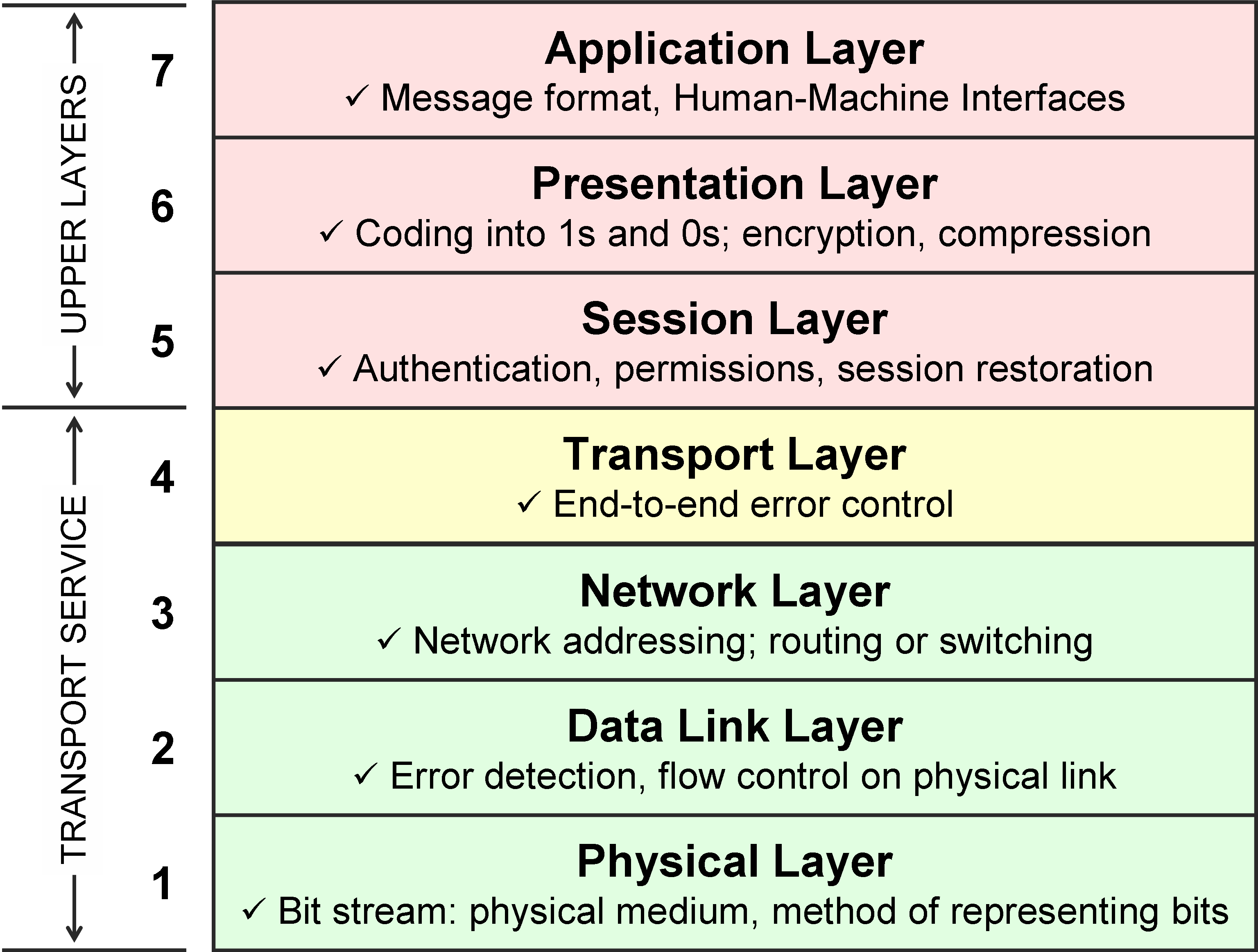Tutorial: The OSI 7-Layer Reference Model


The OSI Reference Model is referred to as a 7-layer model because the total set of functions required to interwork diverse systems was defined and then broken up into seven groups or layers, and arranged in a hierarchy. Each layer has a name and a number. We start numbering at the bottom:
1: Physical Layer The physical layer provides a raw bit stream service. It moves 1s and 0s between the systems. This is all it does, but it has to do this completely. The physical layer includes the mechanical, electrical, functional and procedural specifications for moving binary digits over a physical medium.
2: Data Link Layer The data link layer manages communications on a single circuit, a single link . There may be several stations connected to the circuit – a multidrop circuit – but it is a single physical circuit. Typically sends frames or cells of data across the physical medium with an error check, and performs flow control on the link. This allows communications of blocks of data to another computer on the same circuit.
3: Network Layer What happens if we don't have a single link, but 86 of them, and we do not want our data broadcast to all 86 destinations, but rather want it routed and delivered to just one destination? This is the definition of a network… moving data from one link to another, essentially a forwarding function.
4. Transport Layer If the receiver isn't on our network, but on another one, and the networks are connected together with data circuits, or worse yet, multiple intervening networks, how do we know that our data got delivered? The transport layer provides end-to-end error checking to verify that the data was successfully delivered to the far end, and in some cases, retransmit data that was not. Also specified in the transport layer header is the source and destination port number; essentially an identification of which computer program to communicate with on the far-end computer.
5. Session Layer The session layer manages sessions between applications, including initiation, maintenance and termination of information transfer sessions. Usually this is visible to the user by having to log on with a password. SIP is another example of a session layer protocol, used to set up Voice over IP phone call sessions.
6. Presentation Layer The presentation layer is very important: this is the coding step. How are we going to represent our message in 1s and 0s? ASCII is an example of a presentation layer protocol. Compression and encryption can also be discussed here – they too are methods of coding messages into 1s and 0s.
7. Application Layer Sitting on top of all of this is the application layer. The application layer defines the format of the messages that will be exchanged, and is usually bundled with a Human-Machine Interface - the applications you and I use to get access to all of this wonderful distributed computing and communications.